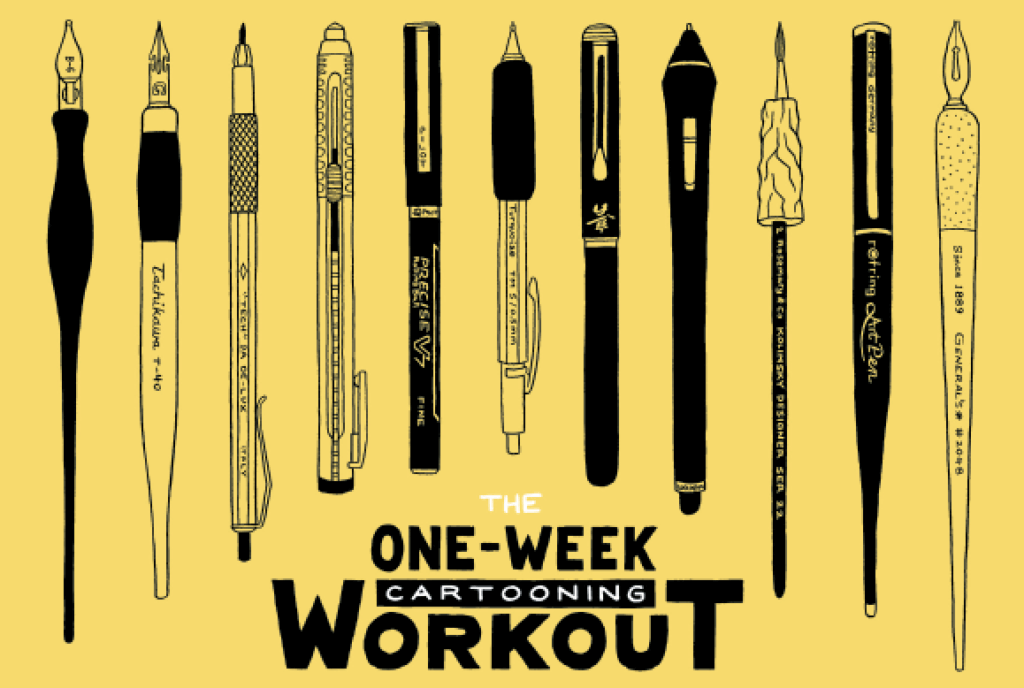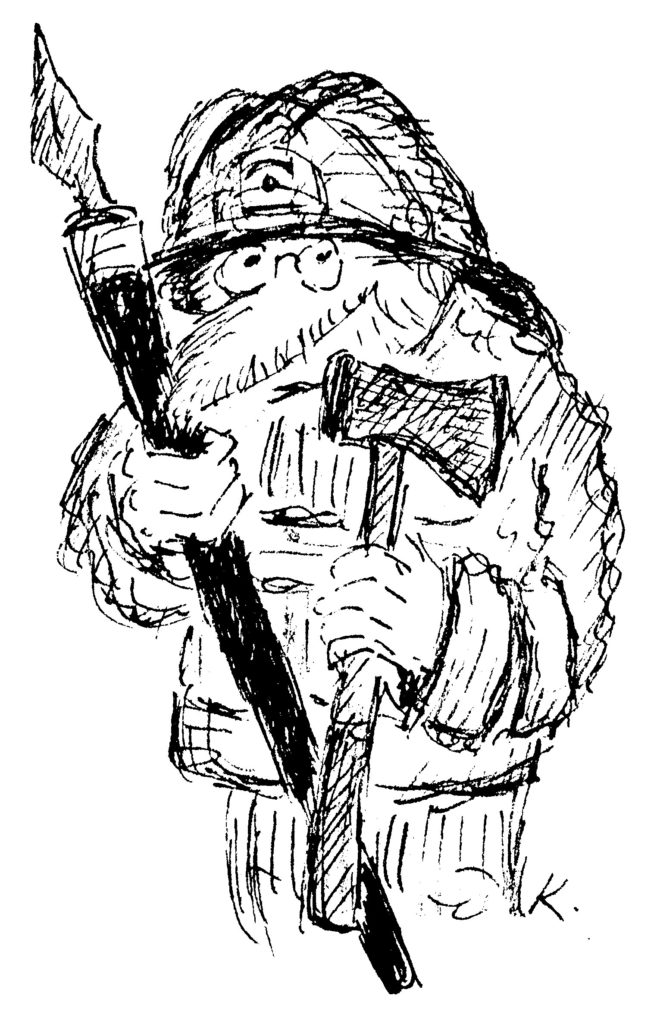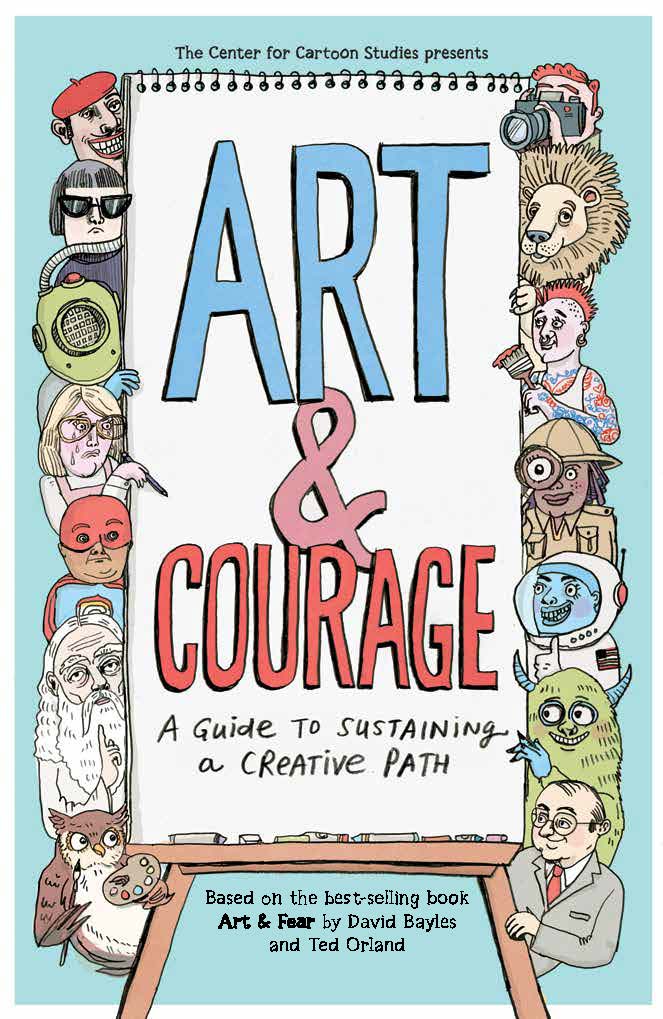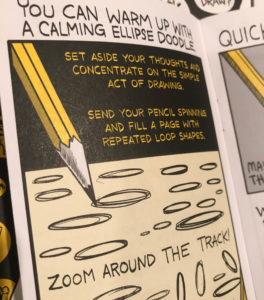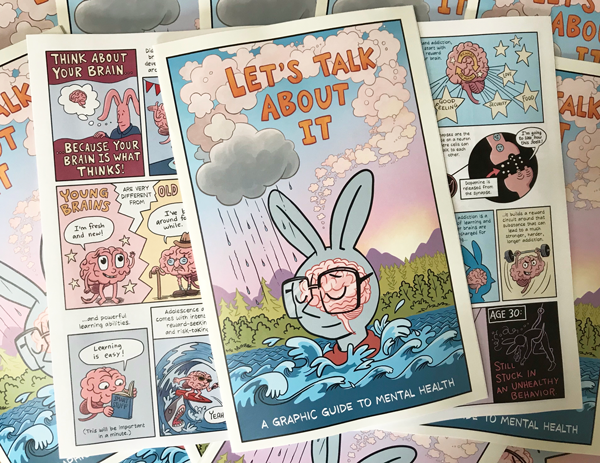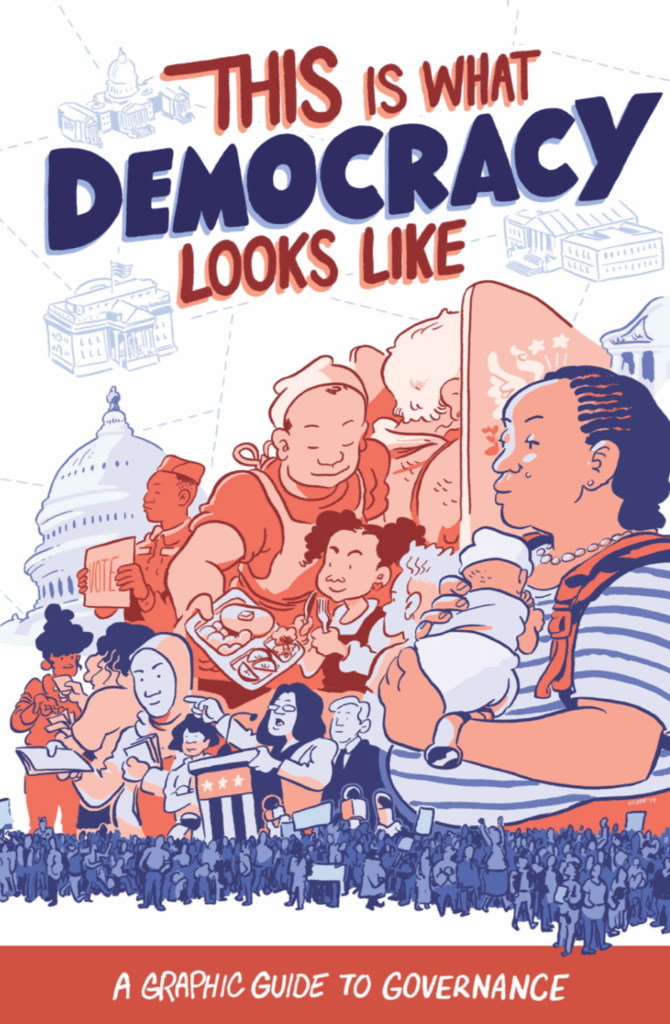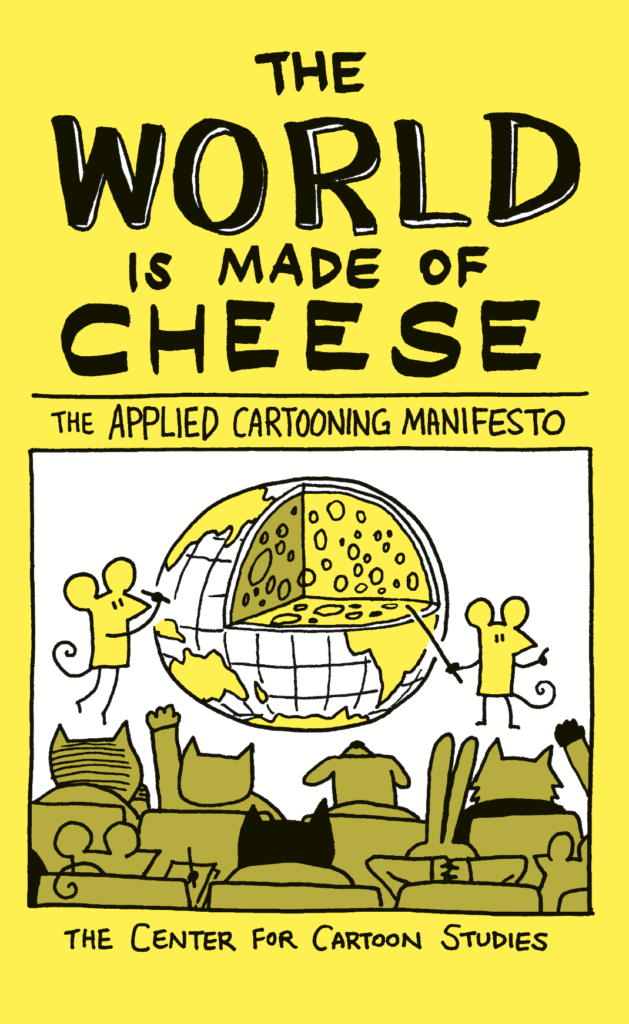July 23, 2019
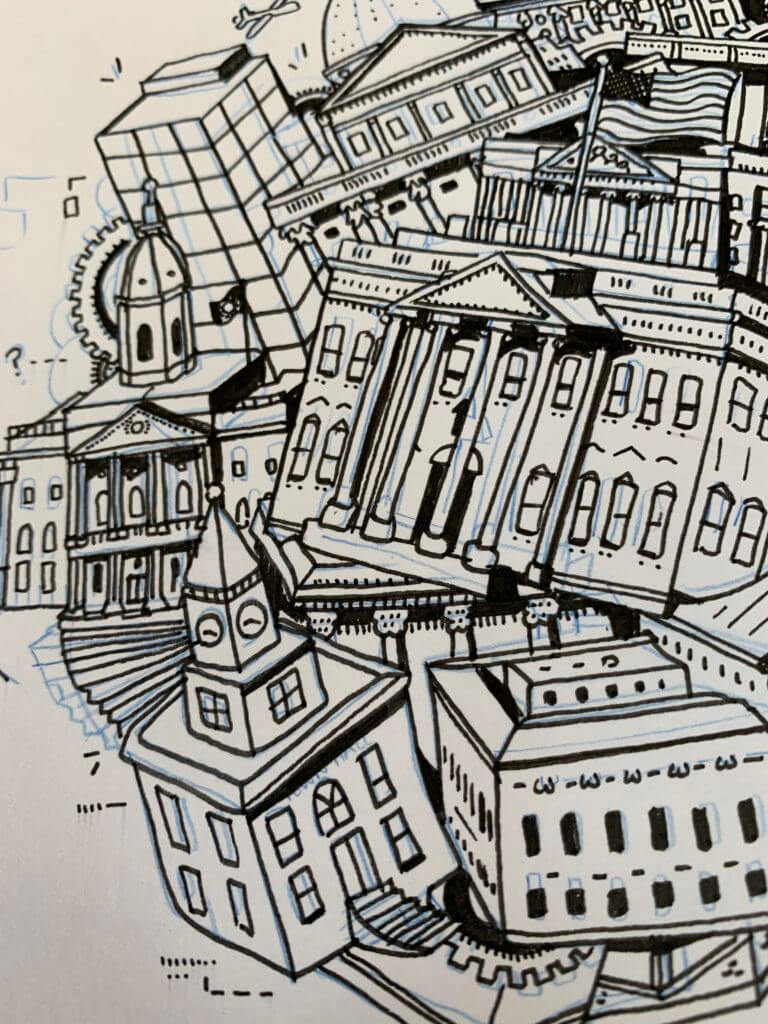
Dan Nott ‘18 is the lead cartoonist on This Is What Democracy Looks Like, a graphic guide to governance. Now on Kickstarter, The Center for Cartoon Studies is working with The Mikva Challenge, a non-partisan non-profit organization working toward a stronger, inclusive democracy, to connect to classrooms. CCS instructors will visit schools to give away comics and work with teachers to help students gain a deeper understanding of their government.
Dan Nott (Hidden Systems, Random House Graphics, 2021) gave the following interview with Angela Boyle ’16 about the creation of the comic.
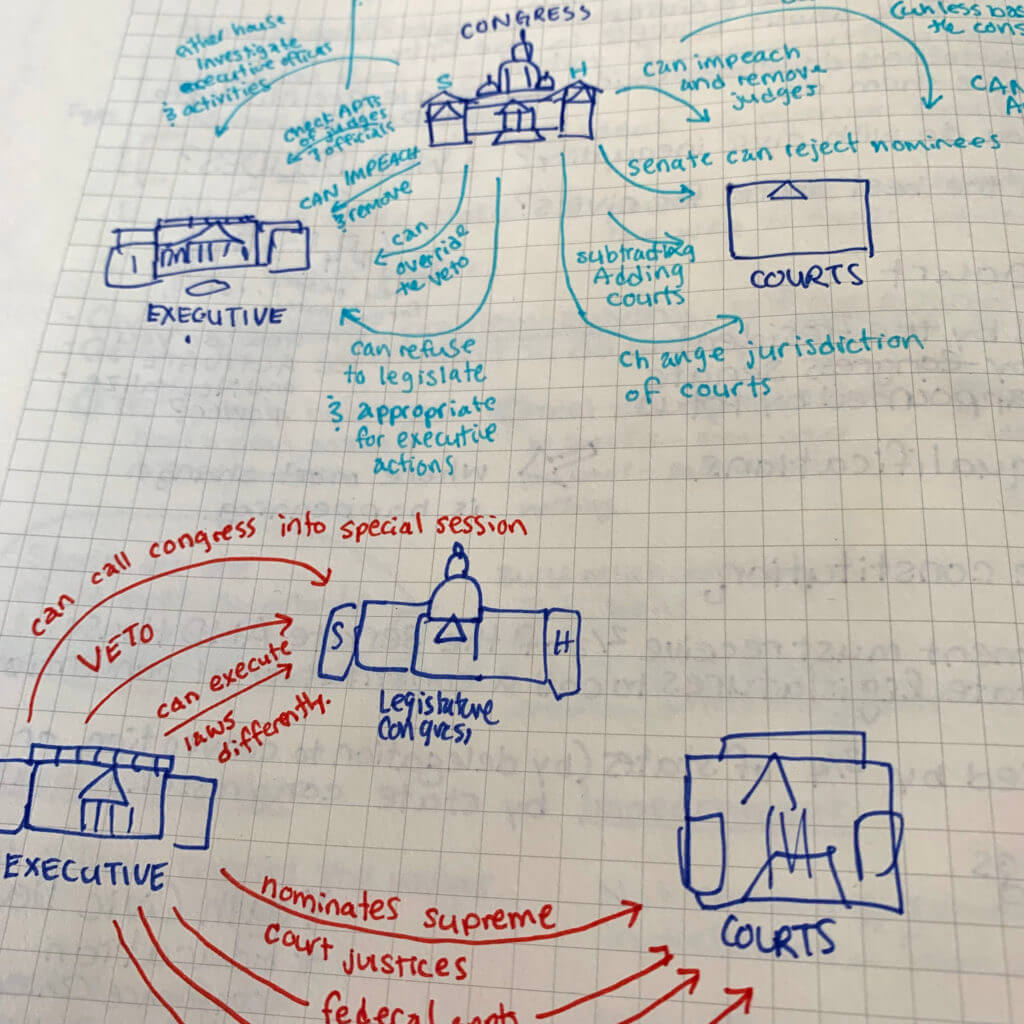
How did you get involved with this project?
Last Spring, James Sturm asked me if I’d be interested in collaborating on a 24-page comic about democracy with him and Nomi Kane. At the time, I was finishing up my comic about the history and geography of the internet (Hidden Systems), and it sounded like a fun summer project. The idea was pretty loose at that point, and I think we’re all pleasantly surprised with what this initial idea ended up growing into a year later.
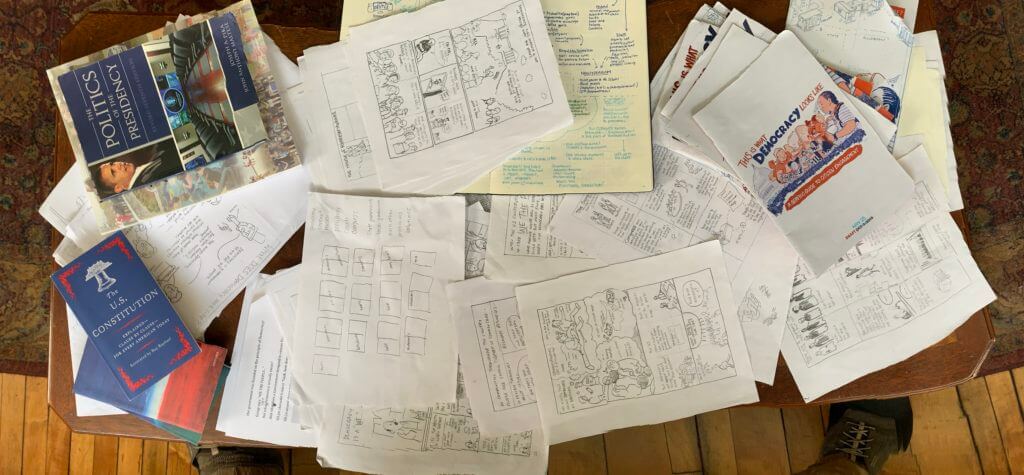
What has been your process working with James Sturm as the editor?
I really enjoyed working with James. I get the feeling he takes a pretty intuitive approach to making comics, which is also how I like to work. James and Nomi and I would have conversations about directions we could go in, and I’d get back to them with sketches and page ideas. At every stage of the process, I made dummy versions of the comic and sometimes worked directly in book form. This way, everyone could get a feel for how it reads from page to page. James and I would meet every few weeks at his studio and go over the latest draft.
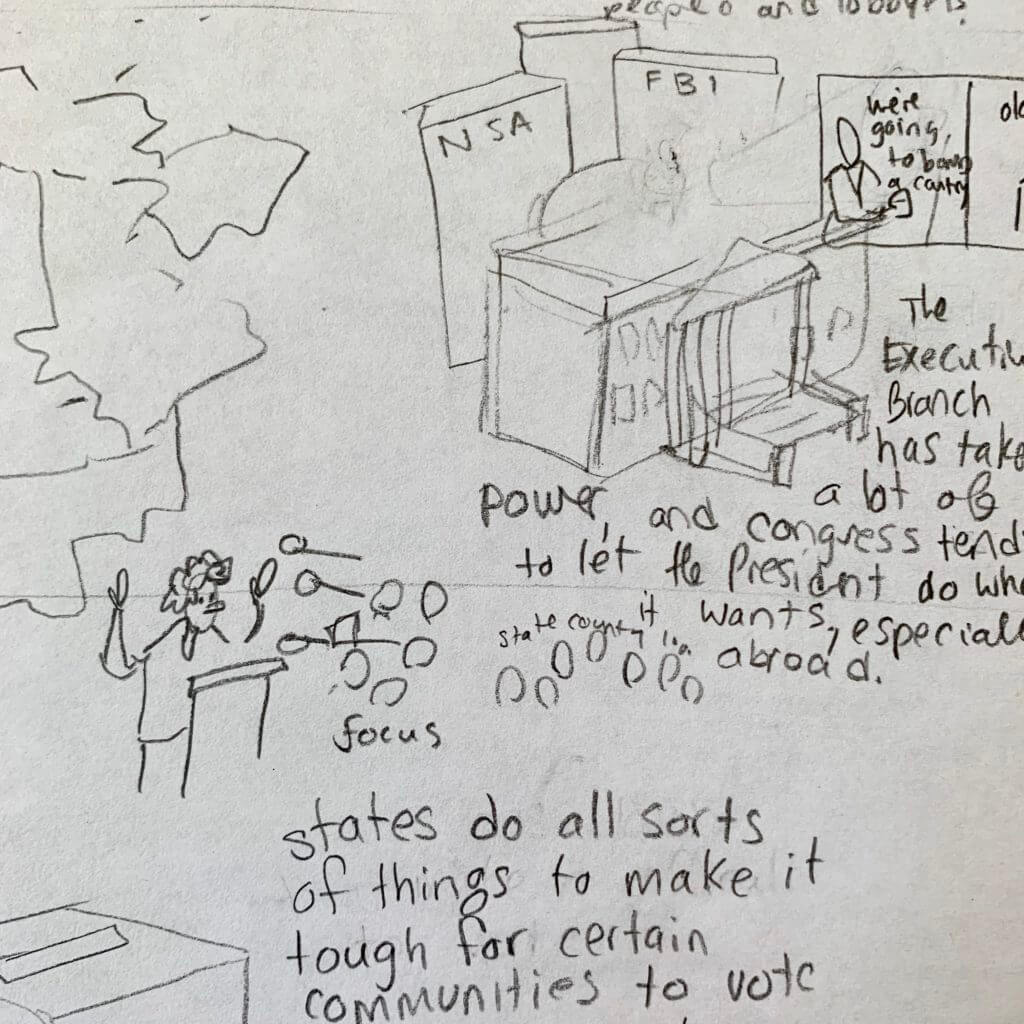
How did you research the topic and how did you organize the data into a comic?
When we started, we had to decide the most useful way to approach the topic. I went to the Dartmouth Library to look for books about democracy and quickly realized that, while there’s thousands and thousands of academic books about democracy, there wasn’t a whole lot of resources about the basics of how our government is set up.
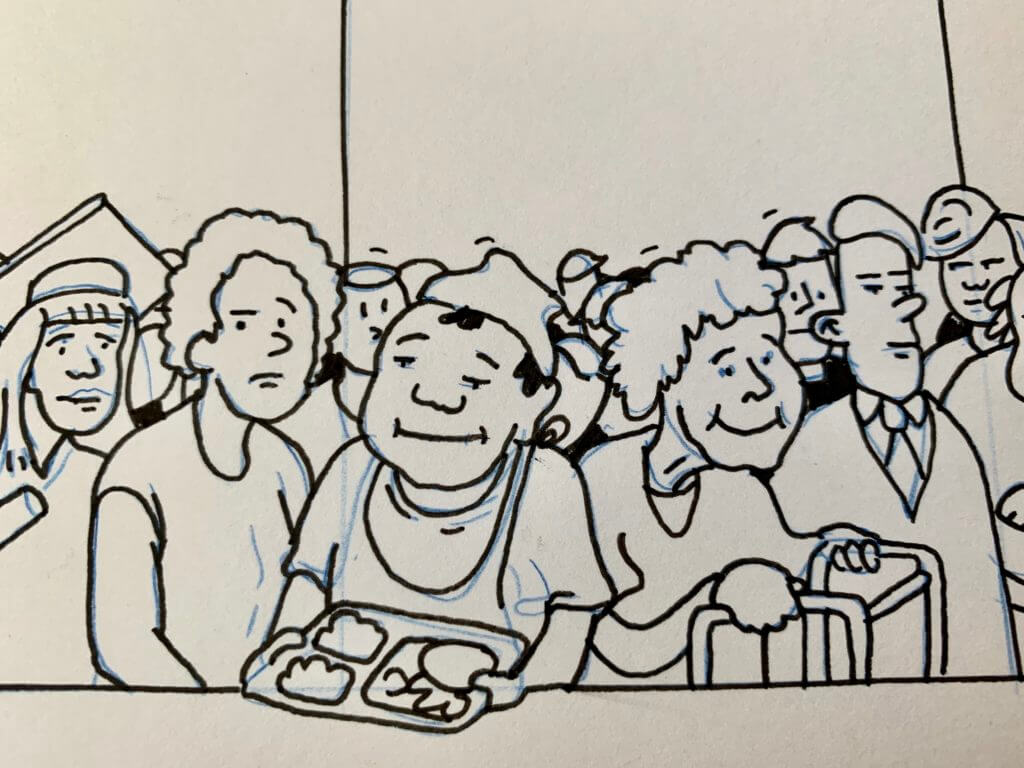
Maybe we’re all just supposed to remember this information from high school? Clearly it hasn’t worked—a 2016 poll from the Annenberg Public Policy Center at the University of Pennsylvania found that only like 25% of adults could name the three branches of government—a full third could only name one. So I guess we were thinking, what’s the point of an editorial or theoretical book about democracy if we don’t even know the basics? How can we expect to get anything done if we think of democracy just as voting for a president every four years?
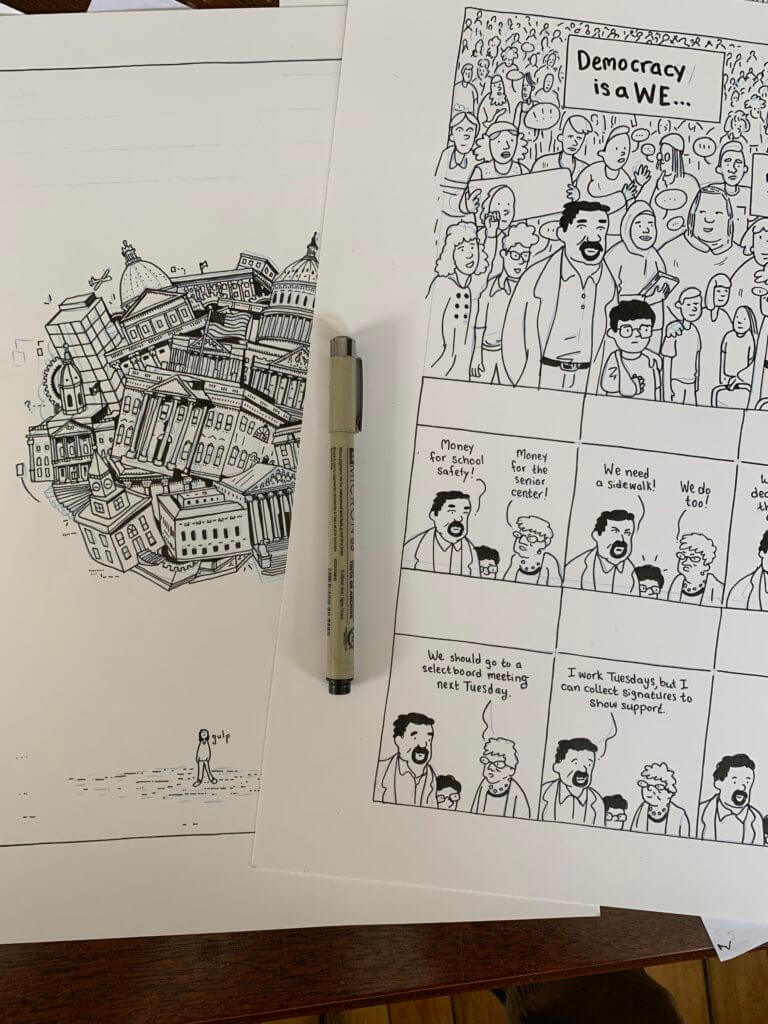
Once we decided on a structure, the information wasn’t hard to find. Most government agencies and state and local governments have decent websites that explain how they work. We talked with educators, journalists, and people that work in government to get feedback as well. The harder part was picking out the most important information, condensing it, and pairing it with visuals. I had like one panel to explain the electoral college and I must have rewritten it a dozen times trying to get it to work. For the drawings, I decided to focus on the buildings because I think it’s helpful to have something solid and physical to picture so that institutions like Congress feel less abstract.

What is your process for working with the contributing cartoonists?
Kevin Czap’s image was the first thing that was done in this project, originally as a promotional graphic. I was really inspired by its aesthetics and editorial statement, and was thrilled when they agreed to adapt it for the cover. James provided great feedback on my layouts and images. And there are even a few pages in there that Nomi, James, and I each had a hand in drawing. For one of my favorite page spreads toward the end, James sent me some penciled pages based on some of Nomi’s sketches based on my outline, that I then reworked, inked, and colored them. I think James has a real knack for coming up with characters that even in the course of a few panels seem to have fully formed personalities. That was a great contrast to some of the more information-heavy parts of the comic. I guess I would say it was most inspiring to see the alchemy that occurs when you combine a bunch of cartoonists with different styles and approaches into one project.

Tags: Dan Nott, F.I.R.E., James Sturm, Kickstarter, Mikva Challenge, Nomi Kame, Random House Graphics, This Is What Democracy Looks Like
